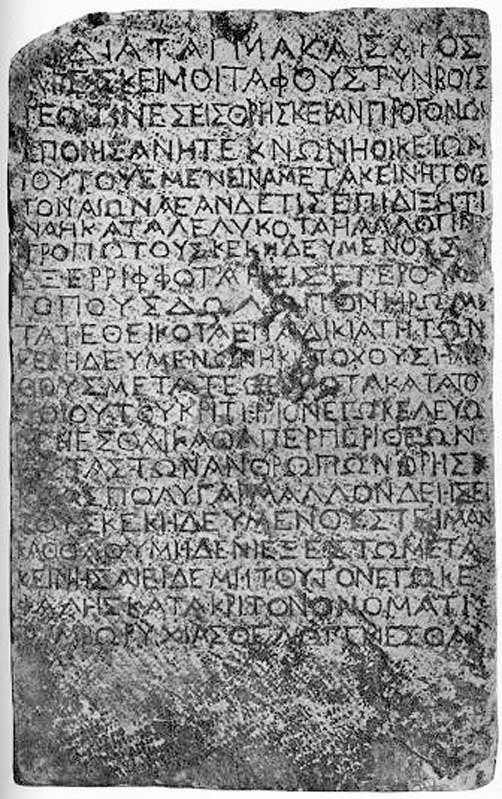Ancient Propaganda: Christ’s Resurrection was their Target
As we see the methods of propaganda playing out to cover truth, the an early example of propaganda called the Nazareth inscription can bear witness. In Matthew 28:13, it references authorities paying the soldiers “large sums of money” to claim that the disciples had stolen Jesus’ body. The Nazareth decree confirms this propaganda had been spread. The dating of this inscription also confirms that the first claims of Christ’s resurrection came from Jesus’ Apostles, themselves, and was not a later invention by Christians of the post-apostolic period. The Nazareth Inscription can now be found at the Louvre in Paris, but more and more finds are being unearthed in Israel, Jordan, Saudi Arabia, and all over the Middle East!
Caesar Ordered Capital Punishment for Body Robbers
The ancient world is a wealth of puzzle pieces slowly being put together to confirm historical events described in the Bible. The Nazareth Decree or Nazareth Inscription is just one of those many puzzle pieces. Nazareth was a significant antiquities market in the late 19th century, the decree was moved from Nazareth to Paris in 1878 by Wihelm Frohner. Since then, the inscription has been analyzed by scholars that confirm the language and style of the inscription to be between 50 BCE and 50 CE. Examining further, the style seemed to be most likely used around the turn of the era with language commonly used around the Decapolis and Samaria.
The Greek inscription translated to English:
Edict of Caesar

It is my decision [concerning] graves and tombs—whoever has made them for the religious observances of parents, or children, or household members—that these remain undisturbed forever. But if anyone legally charges that another person has destroyed, or has in any manner extracted those who have been buried, or has moved with wicked intent those who have been buried to other places, committing a crime against them, or has moved sepulcher-sealing stones, against such a person, I order that a judicial tribunal be created, just as [is done] concerning the gods in human religious observances, even more so will it be obligatory to treat with honor those who have been entombed. You are absolutely not to allow anyone to move [those who have been entombed]. But if [someone does], I wish that [violator] to suffer capital punishment under the title of tomb-breaker.
2020 isotope studies have concluded the stone came from the island of Kos. Some claim the edict came from there with regards to Nikias of Kos. The question remains, then, why was it found in Nazareth? One answer comes as simply as, trade. Marble was a sought-after commodity in the Greco-Roman world. Marble from all over the Mediterranean could be found scattered abroad. For this reason alone, it can be difficult to claim it was originally created for a certain area if the antiquity was not originally found in that region. However, that is the beauty of archaeology! It is up for debate!
The significance of this decree being found in Israel is two-fold. Most grave robbers stole valuables, not bodies. This decree was about the removal of the deceased, not the robbing of tombs. The second was the reference to a sepulcher-sealing stone which was a special type used in Israel. The text and style fit the region more than it would in Kos. Therefore, even though the marble may come from Kos, it is more likely the inscription was meant for Israel.
Join us on one of our tours and immerse yourself in the past! We will help you see, touch, and feel Biblical history which will grow your faith as no other experience can! Learn about propaganda from the time of Jesus and much more!



